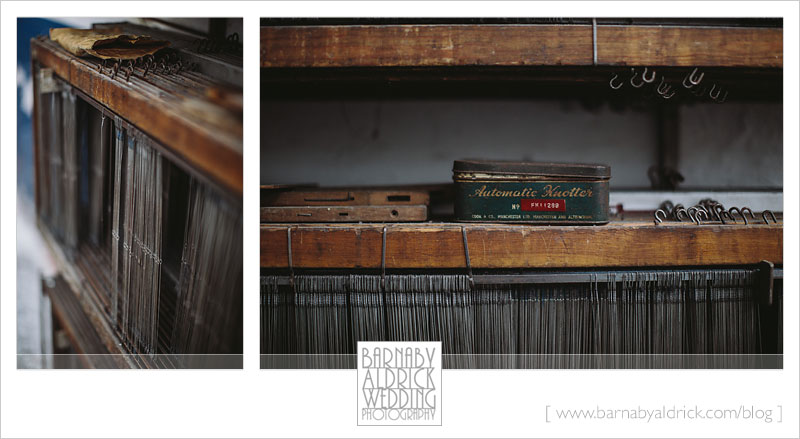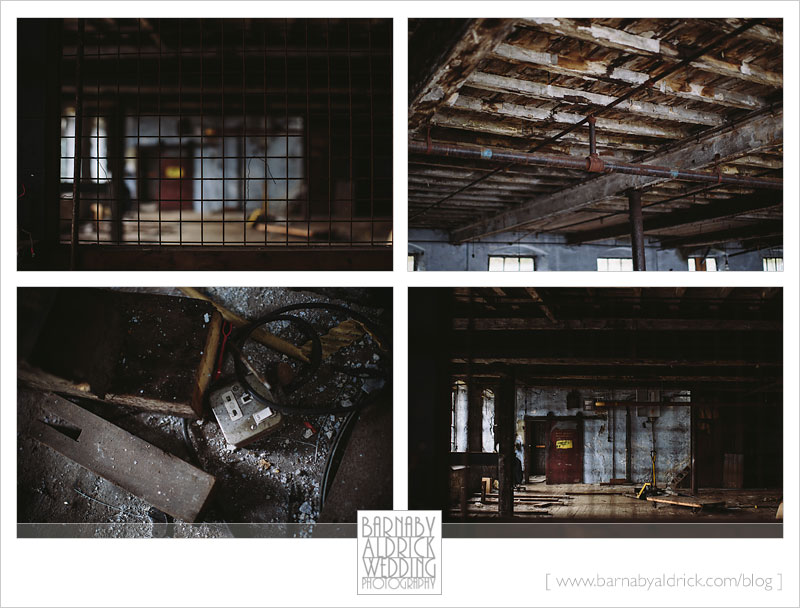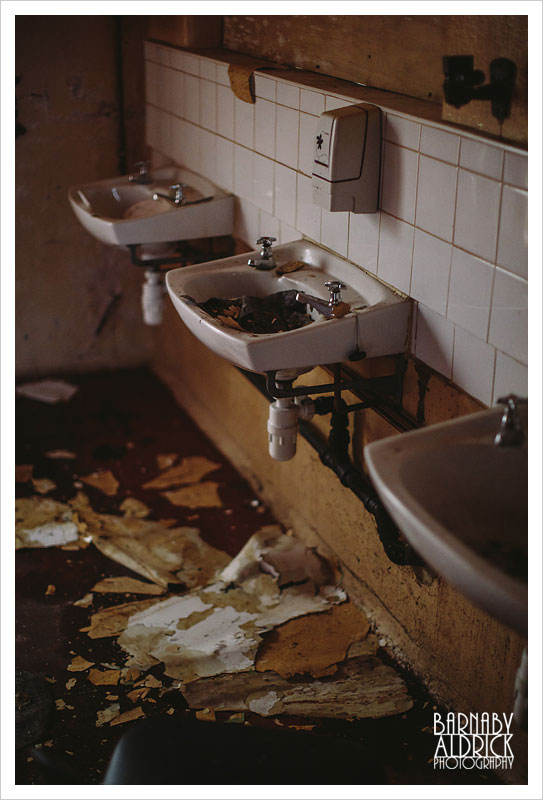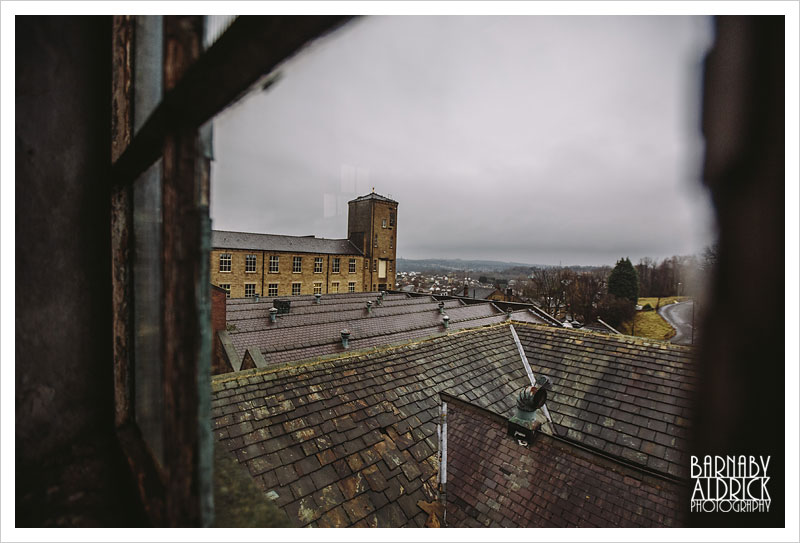
Last Friday I was lucky enough to be asked along by a pal on an Urban Exploration ‘permission visit’ to Sunny Bank Mill in Farsley, Leeds

Here’s the man that can, Joe Stenson; an architect, photographer and a gent, who takes his Urban Exploration across Europe (he’s got PanEuropeanUrbanExporer on his business card!) and has visited some seriously impressive places.
Check out his view on this visit on the 28DaysLater urbex forum here and follow his streams on LeedsUrbex twitter here / Flikr here.

For those who don’t know, ‘Urban Explorers’ are a rabble of photographers into gaining access to and documenting disused and derelict urban spaces. There are ‘guidelines’ accepted by the ‘UrbEx’ fraternity, you don’t break and enter (but it’s nice if someone before you has made access easier!) you leave things as you find them and take only photos. Sometimes gaining access is impossible, sometimes people gain access and a flurry of photos hit Flickr then on-site security lock the place up even tighter.

Sometimes with places closed to the public, such as long-closed cinemas, derelict factories & disused mill sites, the owners are approached for permission by Urban Explorers and sometimes it’s granted and we’re able to do a ‘permission visit’!
![Sunny Bank Mill [Web-Ready] 003](https://www.barnabyaldrick.com//wp-content/uploads/2012/12/Sunny-Bank-Mill-Web-Ready-003.jpg)
The Gaunt family currently own Sunny Bank mill and have been involved with it for six generations. They are committed to creating a stimulating environment from which to run your business and to restoring the historic Sunny Bank Mills to an exceptional standard with all modern facilities. Much of the mill has already been converted into swanky apartments and impressive contemporary office and photographer studio space, and John & William Gaunt are taking much pride in restoring the family mills and promoting business and community in Farsley village.
See more about the place on their ace website here.

After giving a bunch of ‘Exposure Leeds’ photographers a tour of the mill, Joe approached the forward-thinking John Gaunt, about us visiting the mill for our own tour and he kindly showed us round some of the new and old areas he thought might be of interest.
 We started our tour in the mill office
We started our tour in the mill office
where as one of the top ‘worsted’ textile producers in the world, they had samples of every cloth they ever produced, as well as loads of incredible old leather ledgers and technology.

This was the directors personal water filter, that used to be full of coal, and you’d pour water through it to clean it.
Yum.
 We saw some impressive factory spaces on the tour.
We saw some impressive factory spaces on the tour.
![Sunny Bank Mill [Web-Ready] 008](https://www.barnabyaldrick.com//wp-content/uploads/2012/12/Sunny-Bank-Mill-Web-Ready-008.jpg)
Once upon a time it’ll have looked like this!
Most of the old factory rooms now stand empty, but some of working weaving machines have been kept for posterity.
Amazing they are too A few spare parts!
A few spare parts!
Very often, when places are closed down they’re literally shut down and things are just left.
The mill finally closed it’s doors in 2008, and we spotted this open report saying “A bad day at the office!!! Dye House to close”.
 This was one of the machines for making patterns, and a cool vintage box full of ‘Automatic Knotters’
This was one of the machines for making patterns, and a cool vintage box full of ‘Automatic Knotters’

This was the entrance to the ‘Chain Room’… …a room John told us he fondly remembered going into as a child
…a room John told us he fondly remembered going into as a child
there’s a real smell of oil in the air …and everything is covered in oil
…and everything is covered in oil
The room next door used to house the giant boilers

in another mill was this ace space
This old office really is like going back in time

to a time where no desk was complete without and Electro Psychrometer!
Messing about on a retro phone!
Everywhere there is a fantastic level of detail and texture, and I can imagine it being used how it is for film / tv scenes and music videos.
The ceiling of an old bathroom, fallen into the sinks
 Love the colour palette of this one.
Love the colour palette of this one.
A little portrait of Commander Stenson
This was one of my favourites of the day. There are generally chairs left around on UrbEx sites, and they add a sense of scale. Clothes and jackets, be they white lab coats in derelict asylums or mill worker jackets like this, add a human element to the story.
This place must have been such a vast operation back in the day, and I’d love to have seen it at it’s hayday.
Most of the mill grounds are interlinked by walkways.


The composition of this one pleases me. Good lines and again, nice colours.

What an ace place eh? You can see why it’s a heritage site!
You can see how they’re brilliantly developing and rejuvenating the place on their Sunny Bank Mills website here, and it’s fantastic that John can see the value of allowing some photographers access to document the spaces before they develop it further.
Hope you enjoyed the tour!
B
